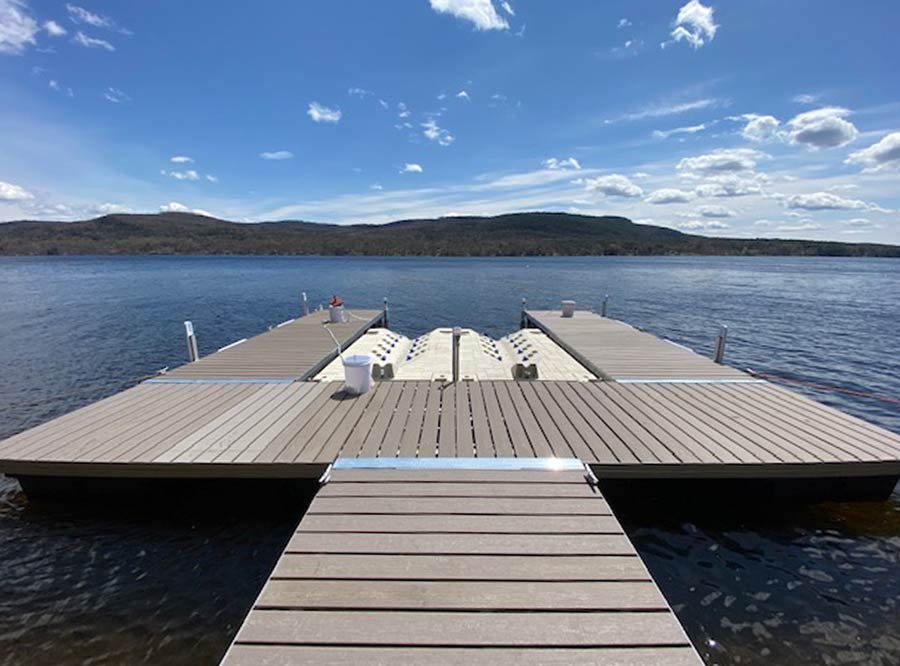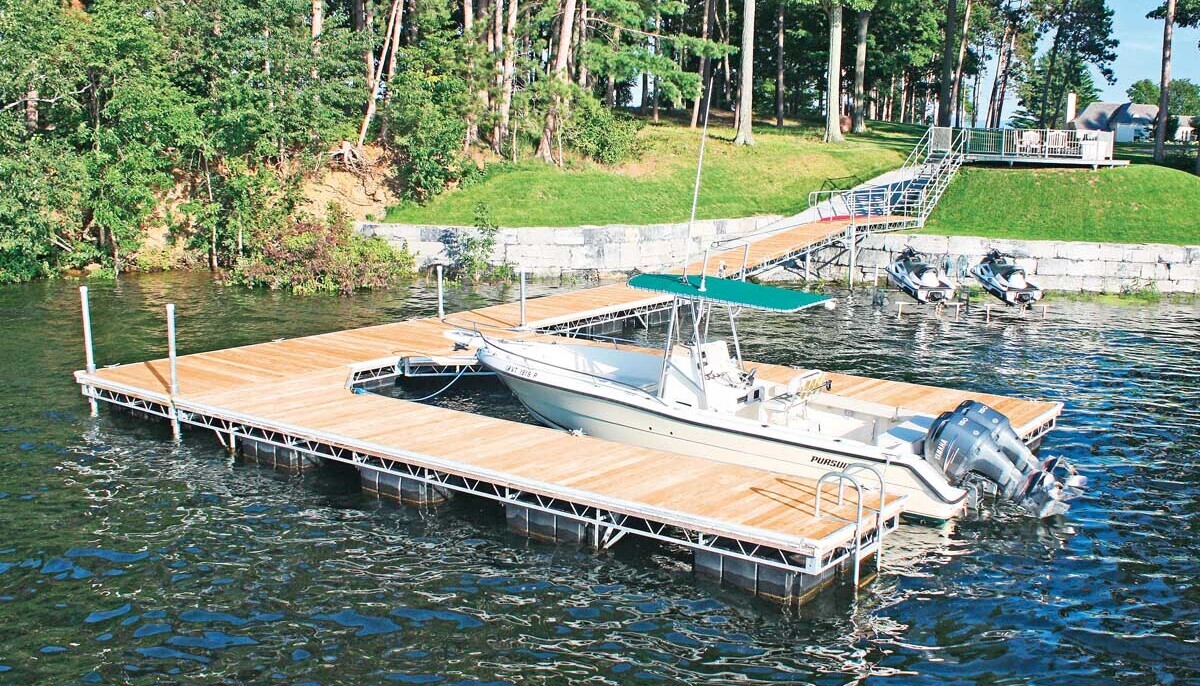Ingenious Floating Docks: The Future of Beachfront Access and Recreation
Ingenious Floating Docks: The Future of Beachfront Access and Recreation
Blog Article
Upgrade Your Waterside With Long Lasting Floating Docks
Upgrading your beachfront with resilient floating docks can significantly improve both capability and looks, providing a functional service for different water tasks. With a range of materials offered, consisting of low-maintenance choices and typical wood, selecting the appropriate dock can complement your individual design and meet useful demands.
Advantages of Floating Docks
Floating docks deal a wide range of advantages that improve their appeal for numerous maritime applications. One of the primary advantages is their adaptability to transforming water degrees - dock company. Unlike standard fixed docks, floating docks fluctuate with the tide, making certain consistent availability for watercrafts and boat no matter ecological problems. This feature substantially minimizes the danger of damage to vessels, as they stay safely tied also throughout fluctuations in water deepness.
Additionally, floating docks are easier to relocate and set up, providing adaptability for seasonal or temporary use. Their modular design enables personalization to fit particular needs, whether for personal marinas, domestic watersides, or business applications.
Furthermore, floating docks produce marginal disturbance to the water setting, protecting neighborhood ecosystems and lowering the probability of erosion. They also provide improved safety and stability for users, as their resilient nature provides an extra forgiving surface area than stiff structures.
Moreover, floating docks can promote a varied range of tasks, such as angling, swimming, and recreational boating, making them an important possession for waterfront growth. Their convenience and practicality make floating docks a recommended option for a variety of naval jobs.
Choosing the Right Materials
Choosing suitable products for floating docks is essential to their longevity, performance, and overall effectiveness. When picking products, consider factors such as ecological exposure, upkeep needs, and structural honesty. Usual products consist of timber, plastic, aluminum, and composite alternatives, each offering distinct advantages and drawbacks.
Timber, while cosmetically pleasing, calls for regular upkeep to avoid rot and decay. Pressure-treated wood can improve sturdiness, however it might still surrender to water damage over time. Plastic floats, often made from high-density polyethylene, are immune to deterioration and need marginal upkeep, making them an attractive option for low-maintenance applications.
Aluminum is an additional practical alternative, known for its stamina and lightweight residential properties. It is resistant to corrosion and can withstand severe weather, although it may be much more pricey than various other materials. Compound products combine the very best features of wood and plastic, supplying a durable and low-maintenance alternative that resembles the look of timber without the connected drawbacks.
Eventually, the option of product need to straighten with the planned use, environmental considerations, and budget restraints, making sure a sturdy and practical floating dock that fulfills your particular requirements.
Setup Process Summary
The effective installment of a floating dock counts on cautious preparation and execution, making sure that it operates successfully in its intended environment. The very first step entails evaluating website conditions, including water depth, shoreline functions, and prevailing weather condition patterns, which will educate the dock design and anchoring system.
Complying with the site assessment, the following phase is to prepare the floating dock parts. This consists of putting together the frame, securing drifts, and connecting any necessary hardware. It is important to guarantee that all links are waterproof and robust to hold up against marine conditions.
Once the dock is constructed, this article the installment process starts with positioning the dock in the water. This can involve a crane or other training equipment, specifically for larger frameworks. Correct placement is important for functionality and security.

Upkeep Tips for Durability
Routine upkeep is important for making certain the longevity and optimal efficiency of a drifting dock. To achieve this, begin with regular assessments at the very least two times a year, concentrating on the stability of the dock's framework, consisting of the flotation protection devices and linking equipment. Look for indications of damages, wear, or rust, and attend to any type of issues immediately to stop further damage.
Cleaning up is an additional vital facet of upkeep. Eliminate particles, algae, and barnacles from the dock's surface to protect against unsafe conditions and maintain aesthetic allure. Utilize a moderate detergent and a soft brush to prevent harming the dock's materials.
Additionally, make certain that the dock is effectively secured and secured to hold up against seasonal modifications in water levels and climate Resources problems. Inspect the anchoring system for security and make changes as necessary.
Enhancing Your Outdoor Visual
To develop a visually enticing outdoor space, incorporating a drifting dock can significantly boost the overall aesthetic of your waterfront home. Floating docks are not just practical yet can additionally work as a striking prime focus that enhances the natural environments - floating dock company. Readily available in various products and designs, these docks can be customized to match your residential property's building style and landscape
The enhancement of attractive components, such as integrated illumination or fashionable railings, even more raises the dock's visual appeal. Think about utilizing see page natural timber finishes, which blend perfectly with the environment, or choosing modern materials like aluminum or composite outdoor decking that provide a streamlined, contemporary look.
Strategically putting planters or seating areas on or around the dock can develop inviting spaces that encourage leisure and pleasure of beachfront sights. Additionally, including shades and textures that harmonize with your landscape will develop a cohesive visual throughout your outdoor location.

Conclusion

Upgrading your beachfront with sturdy floating docks can significantly improve both capability and appearances, providing a functional option for different water tasks. Unlike typical set docks, floating docks surge and fall with the trend, ensuring consistent availability for watercrafts and boat regardless of environmental problems.Choosing ideal materials for floating docks is essential to their durability, efficiency, and total effectiveness.Once the dock is put together, the installment process starts with positioning the dock in the water.In summary, floating docks offer many advantages, including adaptability to water level changes and a selection of product alternatives.
Report this page